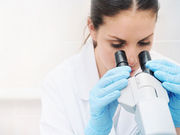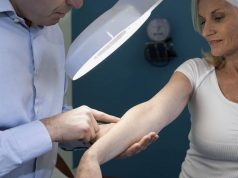6-HAP selectively inhibited proliferation of tumor lines in culture; cut incidence of UV-induced tumors in mice
THURSDAY, March 1, 2018 (HealthDay News) — Strains of Staphylococcus epidermidis producing 6-N-hydroxyaminopurine (6-HAP) may provide protection against skin neoplasia, according to research published online Feb. 28 in Scientific Advances.
Teruaki Nakatsuji, Ph.D., from the University of California in San Diego, and colleagues report on the discovery that strains of S. epidermidis produce 6-HAP which inhibits DNA polymerase activity. The authors describe results of a continued analysis of 6-HAP in culture, and in mice and humans.
The researchers found that 6-HAP selectively inhibited proliferation of tumor lines in culture, but did not inhibit primary keratinocytes. Resistance to 6-HAP correlated with mitochondrial amidoxime reducing component expression; these enzymes were not seen in cells sensitive to 6-HAP. In mice, intravenous injection of 6-HAP suppressed B16F10 melanoma growth, with no indication of systemic toxicity. Compared with mice colonized with a control S. epidermidis strain that did not produce 6-HAP, colonization of mice with a 6-HAP-producing strain reduced the incidence of ultraviolet-induced tumors. Multiple healthy human subjects had S. epidermidis strains producing 6-HAP.
“These findings show a new role for skin commensal bacteria in host defense,” the authors write.
Two authors are co-inventors on a patent relating to the bacterial antiproliferative compound; one author disclosed financial ties to the biopharmaceutical industry.
Abstract/Full Text (subscription or payment may be required)
Copyright © 2018 HealthDay. All rights reserved.








